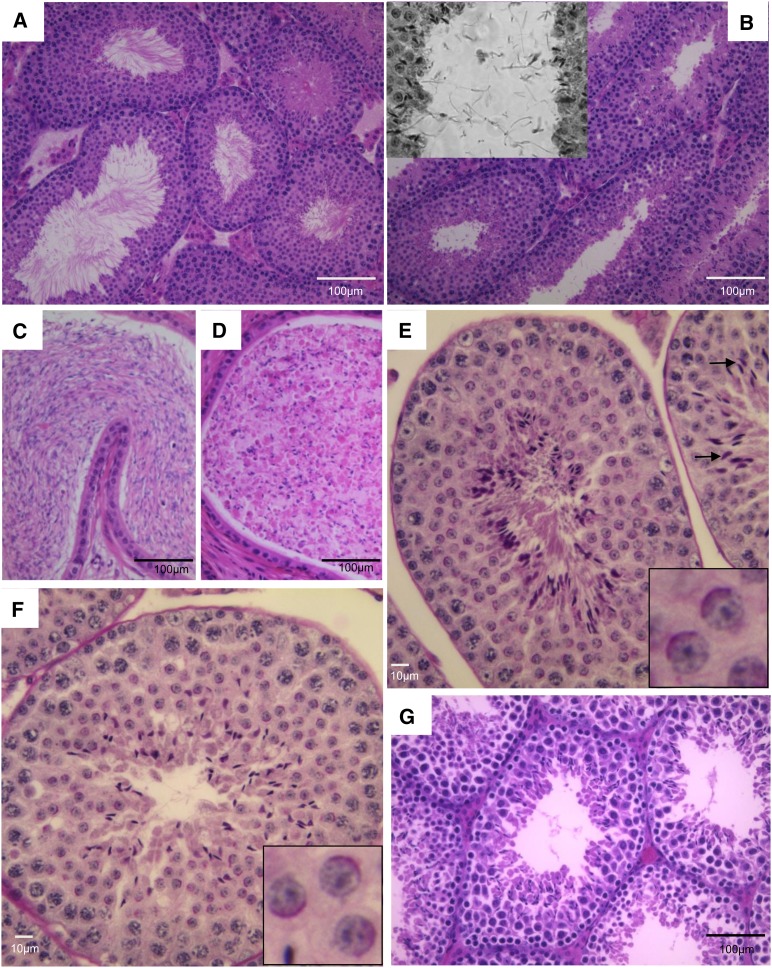Figure 1.
Phenotype of esgd12d mutants. (A) Cross-section of a wild-type testis stained with H&E shows seminiferous tubules with numerous spermatozoa, almost ready to spermiate, with their tails filling the lumens. In esgd12d mutants (B), most sperm do not develop tails but if they do, the heads break apart from the tails (see inset). (C and D) H&E-stained paraffin sections of epididymides from wild-type (WT) and esgd12d/esgd12d mutants, respectively. (E and F) Testis sections from WT and esgd12d/esgd12d mutants, respectively, stained with PAS, which binds the acrosome. The magnified insets show that the acrosomal caps are normal in the mutant. (G) H&E section of IqcgEsgd12d/KO testis. The phenotype is indistinguishable from esgd12d/esgd12d mutants (B).

